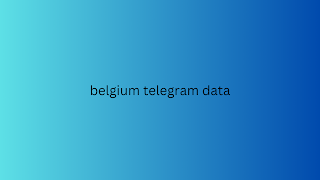On the surface
Posted: Wed Dec 18, 2024 8:39 am
Writing the book they wanted to read
By the way, it is interesting to read why the Steijger triplets wrote this book: they wanted to write the book that they themselves would have liked to read as a coach. This book must fill the void in which the current literature falls short. Namely, offering a holistic and appropriate vision on the broad, deep area of agility, vitality and job satisfaction. For that, they first developed that model, the Diamond Pointer, and then they wrote Wendbaar werken .
agility, vitality and job satisfactionOf course, I cannot fill in for them whether they actually wrote the book that they would have preferred to have written themselves in their development as a coach. But they did present a clear, holistic vision of the broad and deep area of agility, vitality and job satisfaction. Incidentally, they borrow parts of that vision from mentors from this broad area. By bringing everything together, they show that 'work' cannot be treated as a demarcated area by a coach.
The biggest problem with this book, however, is precisely the challenge to describe such an enormous subject in one book (with only 223 pages). With the model they try to fathom an entire human life, from environmental factors to physical vitality, from beliefs to spirituality and meaning. The book therefore remains superficial. It is a belgium telegram data collection of models (mainly from others). It is also questionable whether a coach can cover all aspects of the Diamond Pointer in one trajectory.
This does not mean that this book cannot provide a first step due to the collection of certainly valuable models. The exercises in it are clear, focused on one of the focus areas of the book and can provide a first exploration. For example, if a coachee has never thought about the factors that influence sleep, it is interesting to ask him the question: "What is the ideal sleep pattern?" And you can ask him to download a sleep diagnosis app and discuss these patterns in a session.

How do you deal with that which cannot be made?
The brothers realize that not everything can be coached: they refer to the model of Ap Dijksterhuis. It states that 50 percent of our job satisfaction depends on our behavior and that can then be worked on. However, I would also be interested in the part that we cannot influence or where we are dependent on environmental factors, such as other people or society.
For example, I (as a woman) already suffer from prejudices. If you are non-white or belong to the LGBTQ community, you will (very) likely encounter obstacles that you may respond to. How do you deal with that when it comes to job satisfaction? And how do you ensure that you can make the impact that brings about change? If these aspects were also included in the Diamond Guide, it would be truly holistic and at the very least inclusive
By the way, it is interesting to read why the Steijger triplets wrote this book: they wanted to write the book that they themselves would have liked to read as a coach. This book must fill the void in which the current literature falls short. Namely, offering a holistic and appropriate vision on the broad, deep area of agility, vitality and job satisfaction. For that, they first developed that model, the Diamond Pointer, and then they wrote Wendbaar werken .
agility, vitality and job satisfactionOf course, I cannot fill in for them whether they actually wrote the book that they would have preferred to have written themselves in their development as a coach. But they did present a clear, holistic vision of the broad and deep area of agility, vitality and job satisfaction. Incidentally, they borrow parts of that vision from mentors from this broad area. By bringing everything together, they show that 'work' cannot be treated as a demarcated area by a coach.
The biggest problem with this book, however, is precisely the challenge to describe such an enormous subject in one book (with only 223 pages). With the model they try to fathom an entire human life, from environmental factors to physical vitality, from beliefs to spirituality and meaning. The book therefore remains superficial. It is a belgium telegram data collection of models (mainly from others). It is also questionable whether a coach can cover all aspects of the Diamond Pointer in one trajectory.
This does not mean that this book cannot provide a first step due to the collection of certainly valuable models. The exercises in it are clear, focused on one of the focus areas of the book and can provide a first exploration. For example, if a coachee has never thought about the factors that influence sleep, it is interesting to ask him the question: "What is the ideal sleep pattern?" And you can ask him to download a sleep diagnosis app and discuss these patterns in a session.

How do you deal with that which cannot be made?
The brothers realize that not everything can be coached: they refer to the model of Ap Dijksterhuis. It states that 50 percent of our job satisfaction depends on our behavior and that can then be worked on. However, I would also be interested in the part that we cannot influence or where we are dependent on environmental factors, such as other people or society.
For example, I (as a woman) already suffer from prejudices. If you are non-white or belong to the LGBTQ community, you will (very) likely encounter obstacles that you may respond to. How do you deal with that when it comes to job satisfaction? And how do you ensure that you can make the impact that brings about change? If these aspects were also included in the Diamond Guide, it would be truly holistic and at the very least inclusive